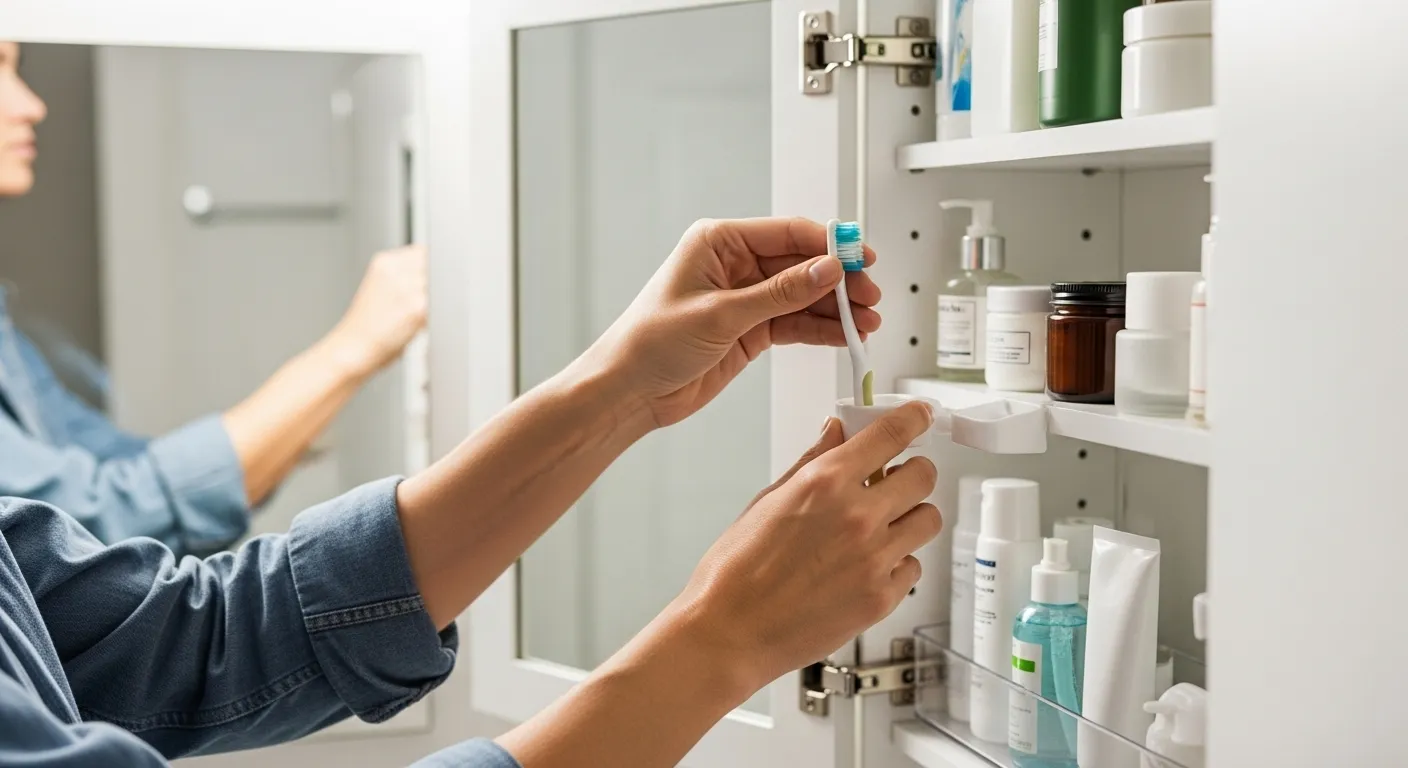
Step 3: Creating Your Zones for Daily Use and Emergencies
With your “Keep” pile sorted and ready, it’s time to think like a city planner. Instead of putting things back randomly, you’re going to create “zones” inside your cabinet. A zone is simply a designated area where you group similar items together based on their function. This simple strategy stops you from having to hunt for things; you’ll know that everything related to dental care, for example, lives in one specific spot.
Prime Real Estate: The Reach Zone
In any storage space, there is what organizers call “prime real estate.” In a medicine cabinet, this is the shelf that is easiest to see and reach, typically the one at eye level or just below. In home organization, this is often called the reach zone, referring to the area between your waist and your shoulders where items can be accessed without bending or stretching. This prime real estate should be reserved for the items you use most frequently—your daily essentials.
Think about your morning and evening routines. What do you reach for every single day? This might include your toothbrush and toothpaste, daily face wash, contact lens solution, or any daily medications that are safe to be stored in the bathroom. These are the items that deserve the most convenient placement. Placing them here reduces friction in your daily habits and makes your routines feel smoother and more automatic.
Common Medicine Cabinet Zones
Beyond the daily-use zone, you can create other logical categories. The specific zones you create will depend on your personal needs, but here are some common and effective examples to get you started:
First-Aid Zone: This is a non-negotiable for every home. Create a small, contained kit with the basics: adhesive bandages of various sizes, antiseptic wipes, antibiotic ointment, gauze pads, and medical tape. Having these items grouped together means you can grab the entire kit in an instant when faced with a minor injury.
Pain & Fever Zone: This is where you can store your go-to pain relievers, like acetaminophen or ibuprofen. If you have separate formulas for adults and children, make sure they are very clearly labeled and stored separately, ideally with child-safe medications on a higher shelf.
Cold & Allergy Zone: Group together antihistamines, decongestants, cough drops, and any nasal sprays. During cold and allergy season, you’ll be grateful that everything you need to feel better is in one predictable place.
Dental Care Zone: Beyond your daily toothbrush and toothpaste, this zone can hold floss, mouthwash, and any specialty dental tools. Using a small cup or narrow container can keep these items upright and tidy.
Skin & Face Zone: This zone is for daily skincare items like cleansers, moisturizers, and eye cream. You could also create a sub-zone for weekly treatments like face masks or specialty serums.
Eye & Ear Care Zone: A small but important category for items like eye drops, contact lens cases and solution, or earwax removal kits.
As you begin to group your “Keep” items into these zones, you’ll get a much clearer picture of what kind of organizers you might need to keep them contained and separated on the shelves.

















